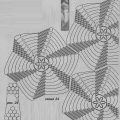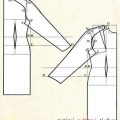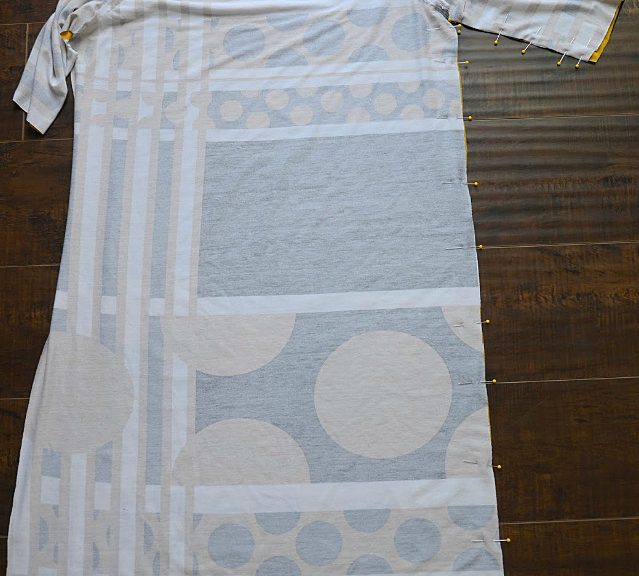
Making a direct summer dress without pattern by own hands according to the instructions and photo
Master class on sewing summer direct dress withoutPatterns by own hands The direct dress is a classics of a fashion which perfectly fits a figure and accentuates all bends of a body. A woman in a straight dress seems more tender, seductive and refined. A straight dress must be present in every woman's wardrobe. The length of the dress can be different. Short and medium-length dresses are worn daily, and dresses with length in the floor are worn for festive occasions, they visually draw out the contours of the figure and make it more elegant and slender. Straight dresses are sewed from various materials. For summer dress take lightweight fabric. For winter dresses - gabardine, wool, jersey, costume fabric. And for a festive dress use satin, silk, brocade, chiffon and others. They can be of different color shades, different textures, decorated with decor. Evening dresses are decorated with lace, guipure, glass or plastic crystals, beads. In summer, a dress with a bright print is actual. 1. A straight dress without a pattern is sewn very easily and quickly. To begin with, you need to choose a knitted fabric. For the summer, it is better to purchase knitwear, which includes cotton and synthetic fibers. In a dress from such jersey you will not be hot and besides it does not crumple and it stretches well. Knitwear is better to choose with a bright original print. He will hide the small inaccuracies and give the dress a unique originality. 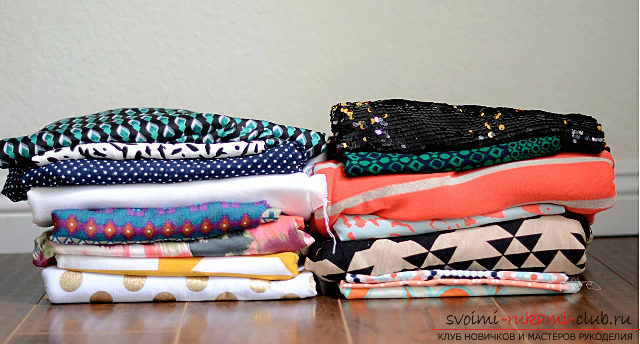 2 to 4. If you use knitwear when sewing, then you do not need to dredge. This dress is easy to take off and put on. Now you need to decide how much tissue you need to buy to make a straight dress. Take the width of the fabric 1,3-1,5 m. Your height is up to 1,75 m and the clothing size is up to 50. Then for dressing the dress you will need the following amount of fabric: - short dress - 1,1 m; - dress to the knee - 1,3 m; - a long dress - 1,8 m. To this quantity of a material it is necessary to add a fabric on sleeves. - short sleeve - 0,2 m; - up to the elbow the sleeve - 0,4 m; - a long sleeve - 0,7 m. But if your parameters are more than the above, then you need to add the amount of fabric. In the store, sales assistants will help you with the calculations. Before starting work, knitwear should be well stripped and smoothed. Pick up a T-shirt that's right for you.
2 to 4. If you use knitwear when sewing, then you do not need to dredge. This dress is easy to take off and put on. Now you need to decide how much tissue you need to buy to make a straight dress. Take the width of the fabric 1,3-1,5 m. Your height is up to 1,75 m and the clothing size is up to 50. Then for dressing the dress you will need the following amount of fabric: - short dress - 1,1 m; - dress to the knee - 1,3 m; - a long dress - 1,8 m. To this quantity of a material it is necessary to add a fabric on sleeves. - short sleeve - 0,2 m; - up to the elbow the sleeve - 0,4 m; - a long sleeve - 0,7 m. But if your parameters are more than the above, then you need to add the amount of fabric. In the store, sales assistants will help you with the calculations. Before starting work, knitwear should be well stripped and smoothed. Pick up a T-shirt that's right for you. 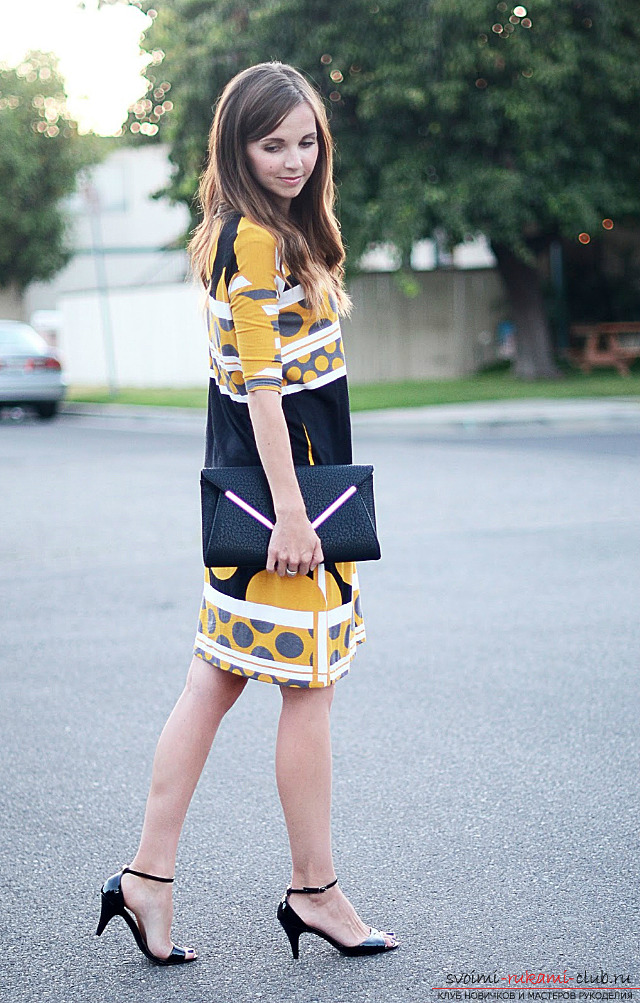
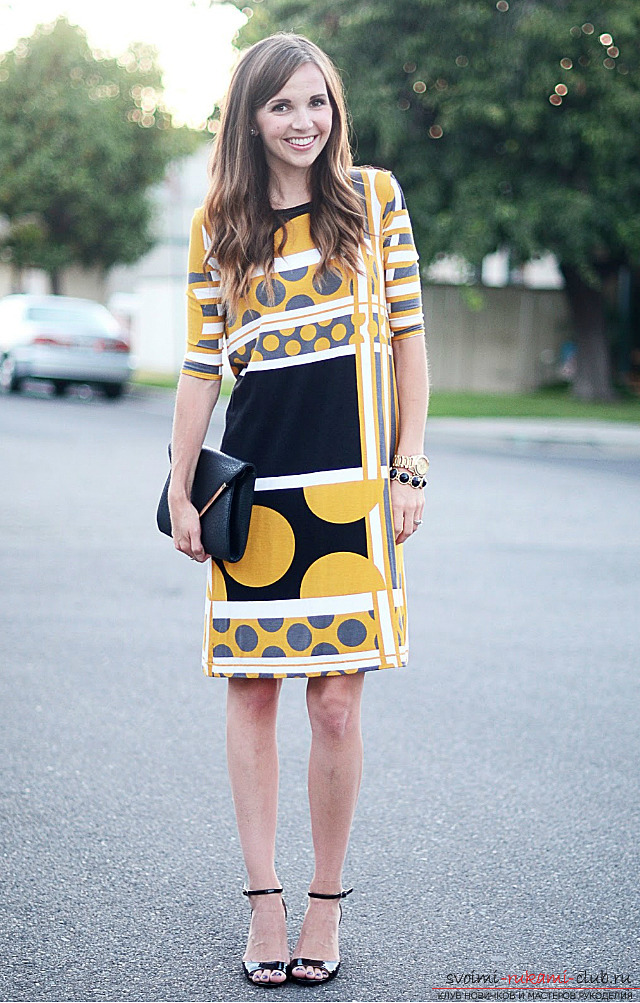
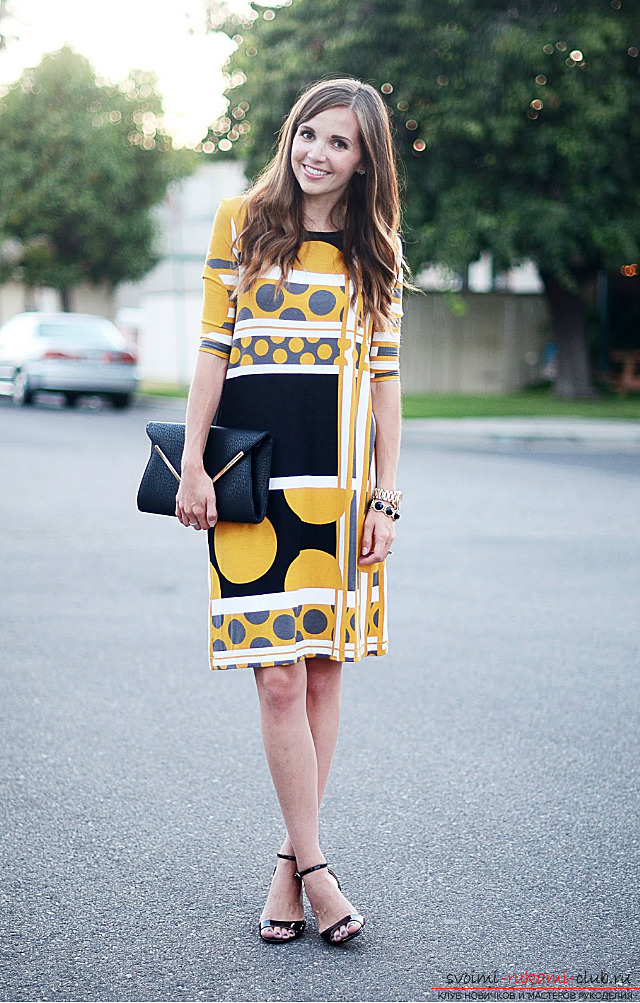 5. We take jersey and fold it in half along the share thread. The t-shirt will be a template. We circle it with chalk or soap. We mark the length of the product. If you have wide hips, then you need to make an increase. Adding allowances to the seams of 1-1.5 cm, we cut out the details.
5. We take jersey and fold it in half along the share thread. The t-shirt will be a template. We circle it with chalk or soap. We mark the length of the product. If you have wide hips, then you need to make an increase. Adding allowances to the seams of 1-1.5 cm, we cut out the details. 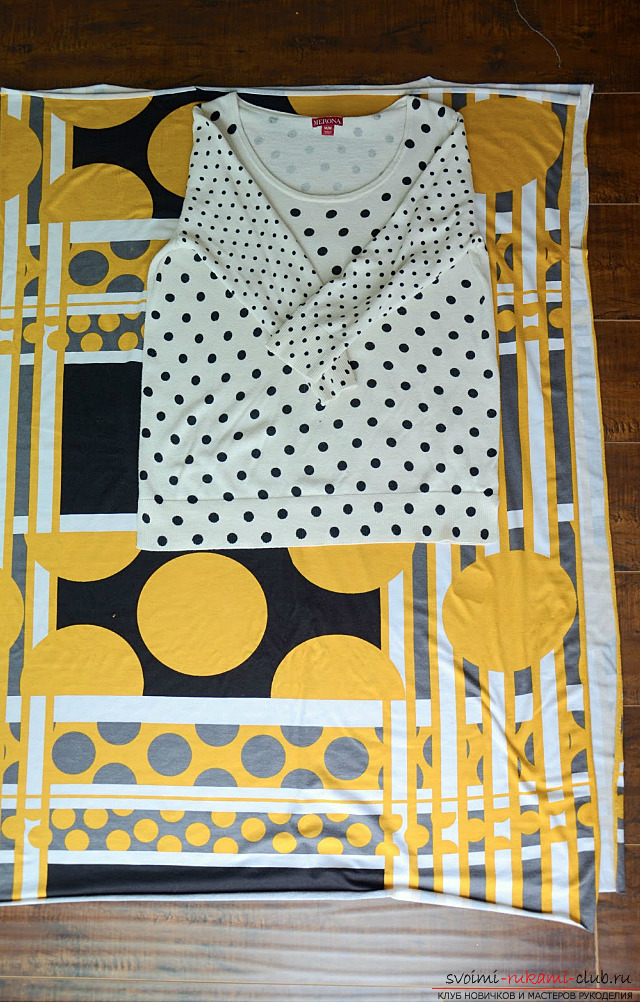 6. On the front of the dress, cut out the desired shape and size cutout. Cut out the sleeves, again using a t-shirt template for this.
6. On the front of the dress, cut out the desired shape and size cutout. Cut out the sleeves, again using a t-shirt template for this.  7. Focusing on the cutout of the front of the dress, cut out the obtacle width of 5 cm. Repeat for the back of the dress.
7. Focusing on the cutout of the front of the dress, cut out the obtacle width of 5 cm. Repeat for the back of the dress. 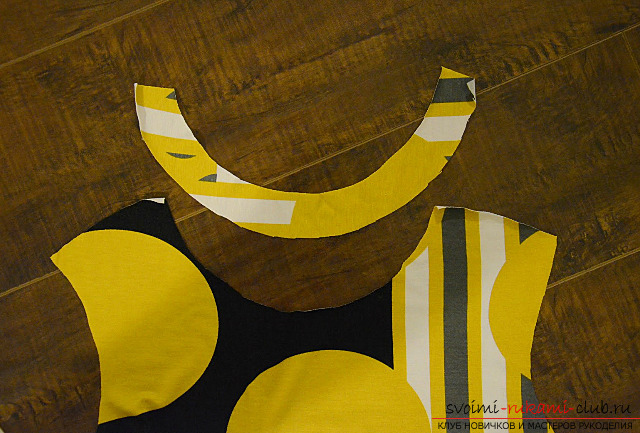 8.-9. We bend the obtuse of the front part of the throat and the neck, as seen in the photo, and shear with needles. Pull out the neckline so that the cutout is neat. We spend, retreating from the edge of 1 cm. Also we do with the back cover.
8.-9. We bend the obtuse of the front part of the throat and the neck, as seen in the photo, and shear with needles. Pull out the neckline so that the cutout is neat. We spend, retreating from the edge of 1 cm. Also we do with the back cover. 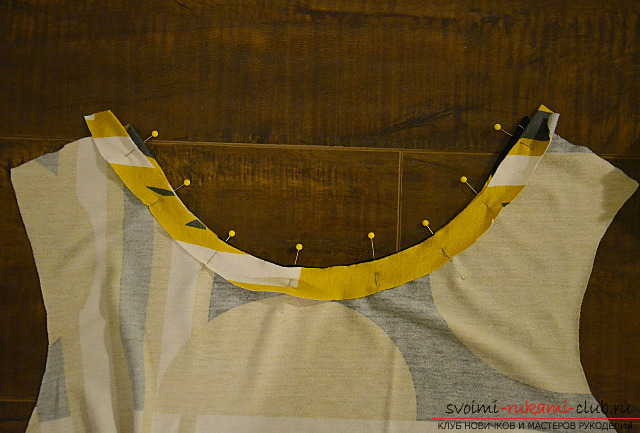
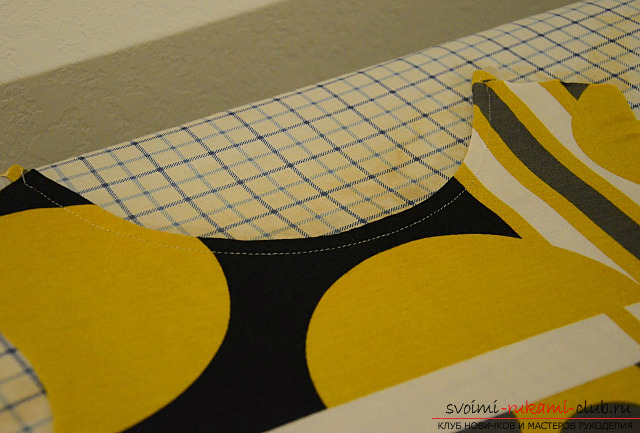 10. Chop and sew the shoulder seam.
10. Chop and sew the shoulder seam. 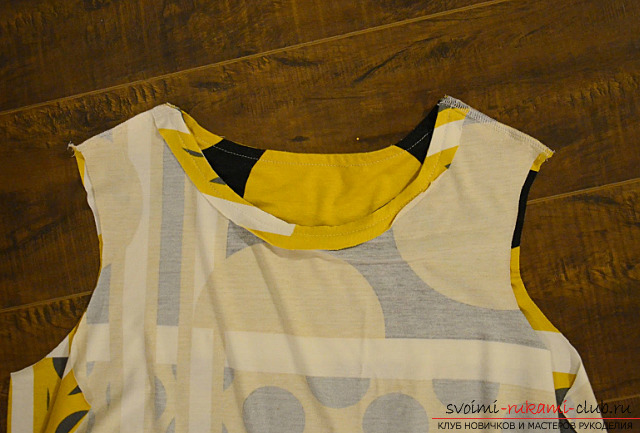 11. We connect the shoulder seam and the middle of the sleeve. With needles, we slit the sleeve to the dress and sew. Sew the second sleeve. If the allowances for the seams are large and interfere, then they can be cut.
11. We connect the shoulder seam and the middle of the sleeve. With needles, we slit the sleeve to the dress and sew. Sew the second sleeve. If the allowances for the seams are large and interfere, then they can be cut. 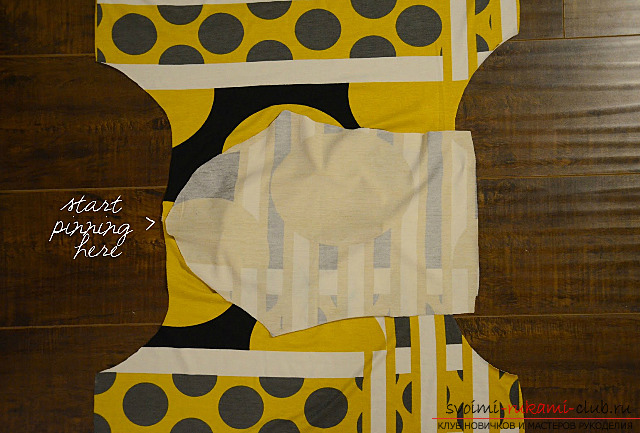 12. Now process the side seam and the bottom of the dress. To begin with, gently with the pins, the side seam is chipped, only without stretching the jersey. The side seam and sleeves must match. Stitching. We fold the bottom of the dress and also we spread it.
12. Now process the side seam and the bottom of the dress. To begin with, gently with the pins, the side seam is chipped, only without stretching the jersey. The side seam and sleeves must match. Stitching. We fold the bottom of the dress and also we spread it.  Our straight dress without a pattern is ready! I wish everyone creative inspiration!
Our straight dress without a pattern is ready! I wish everyone creative inspiration!


